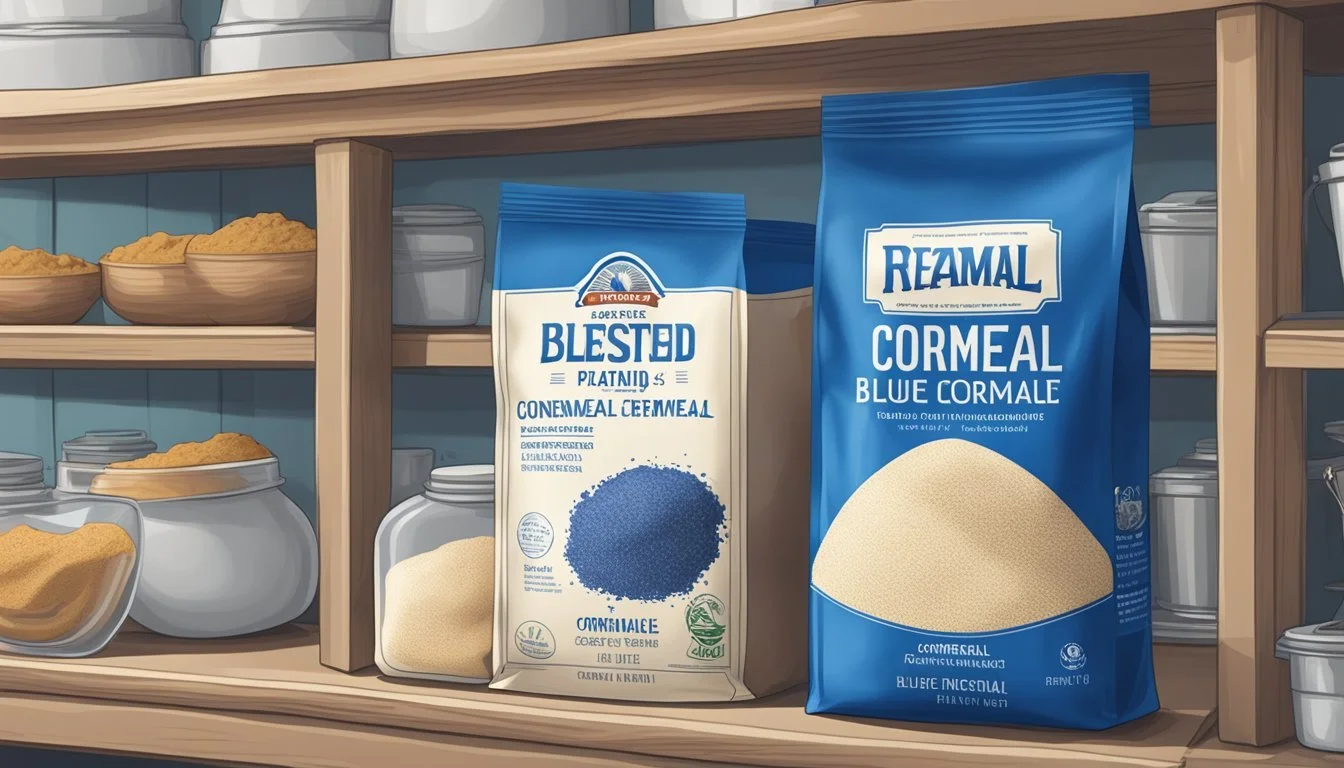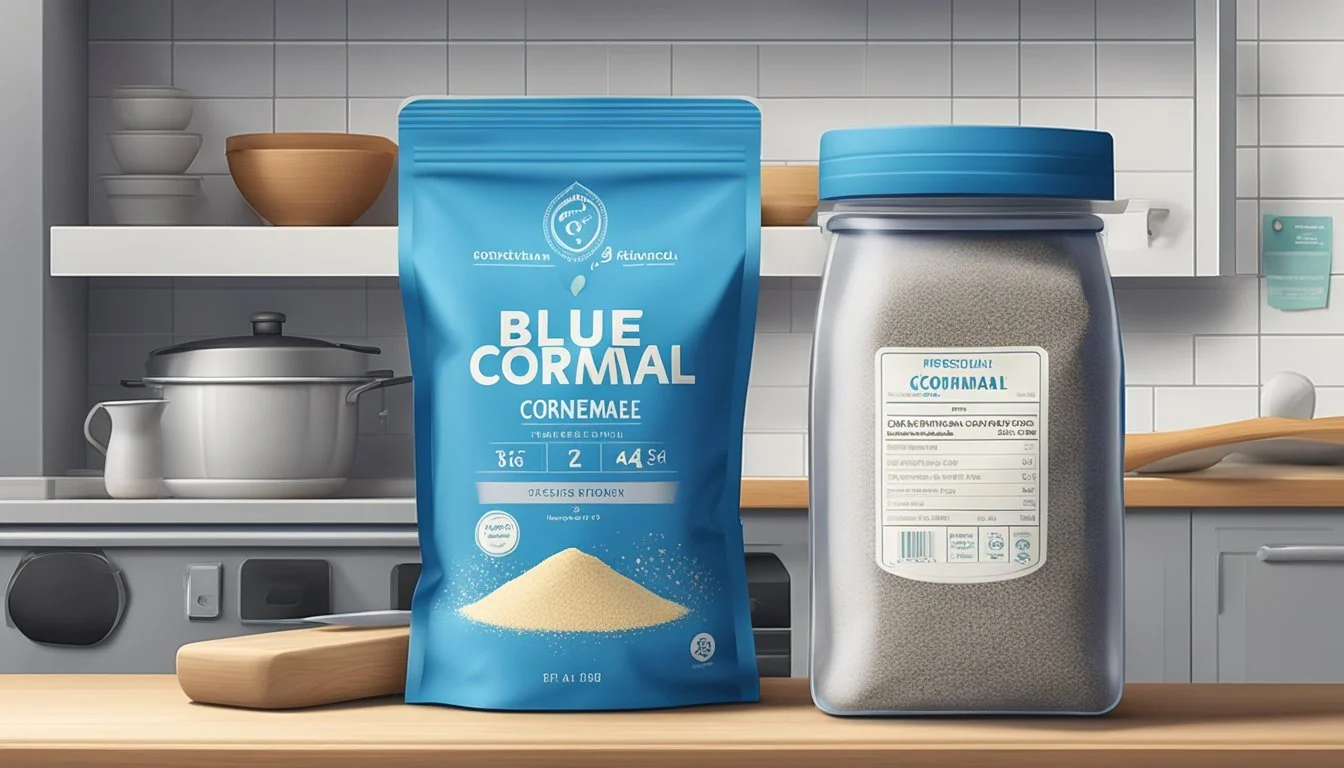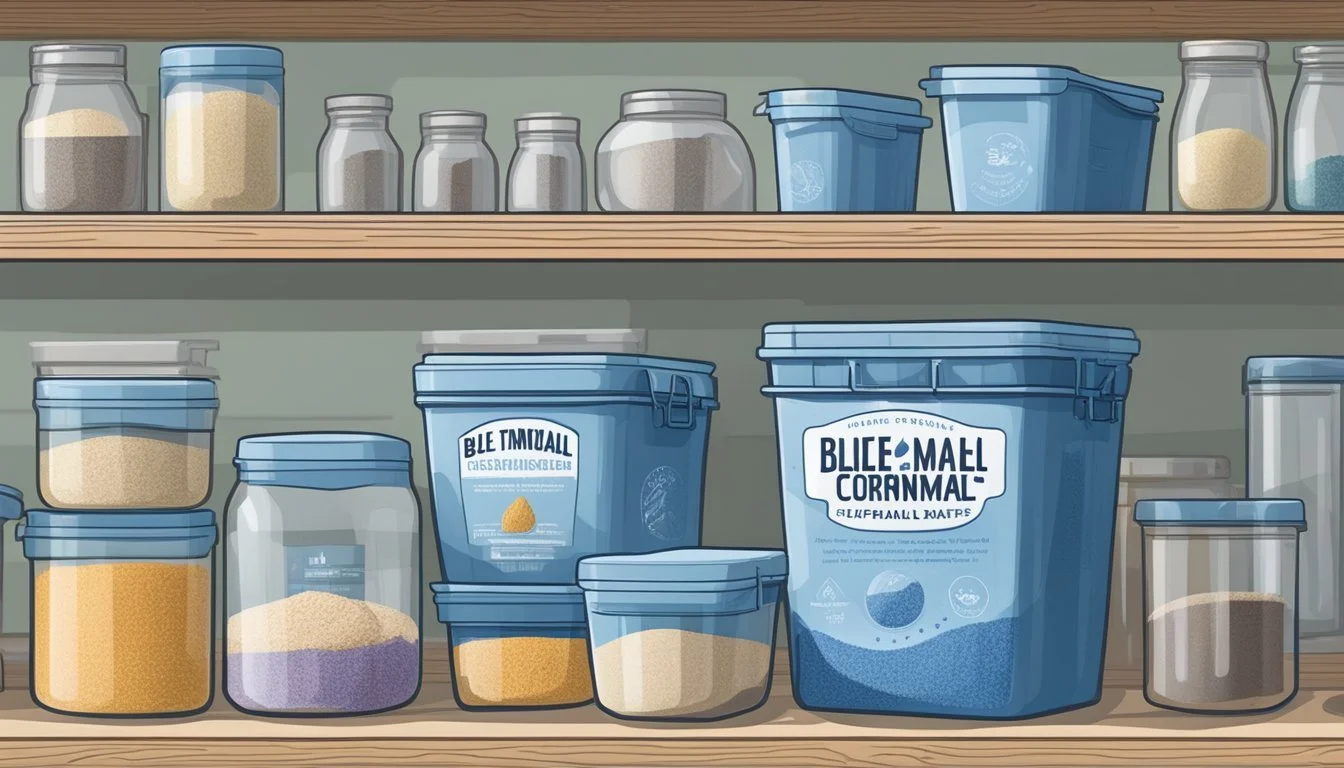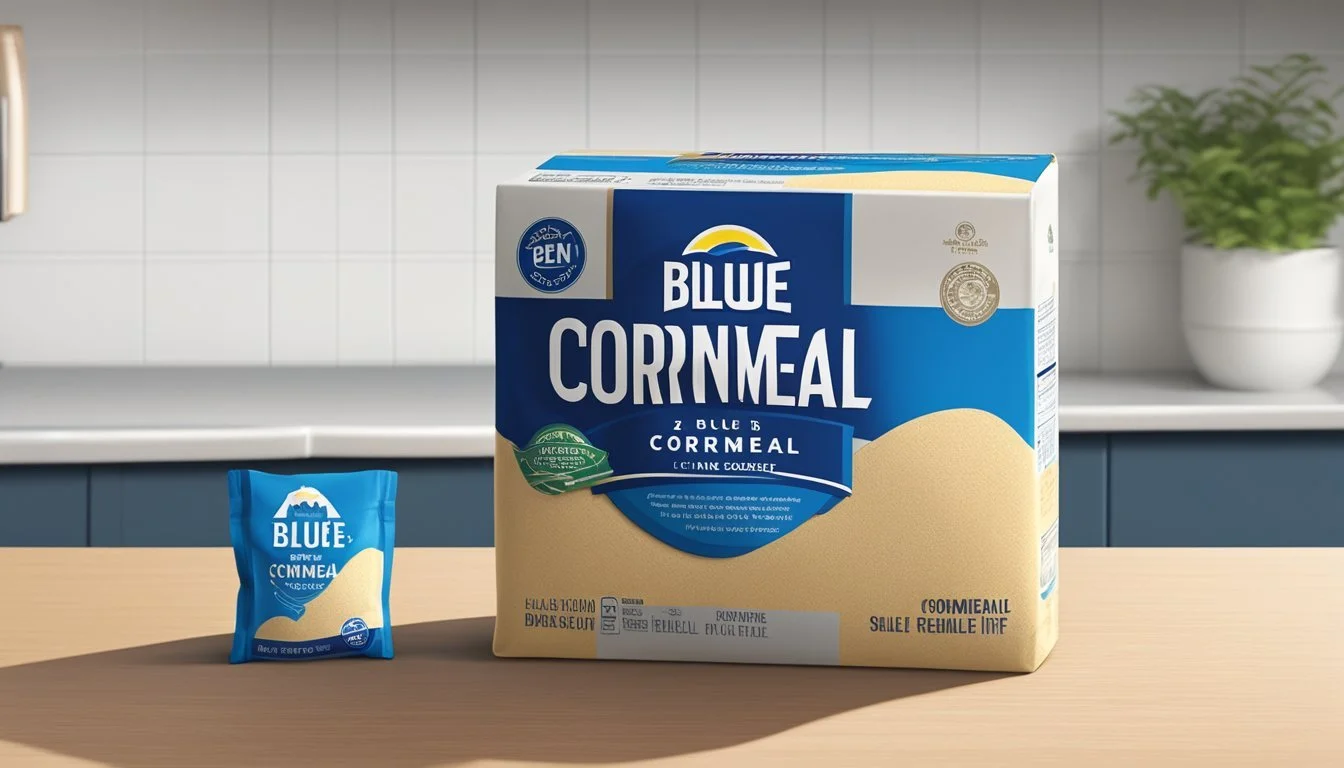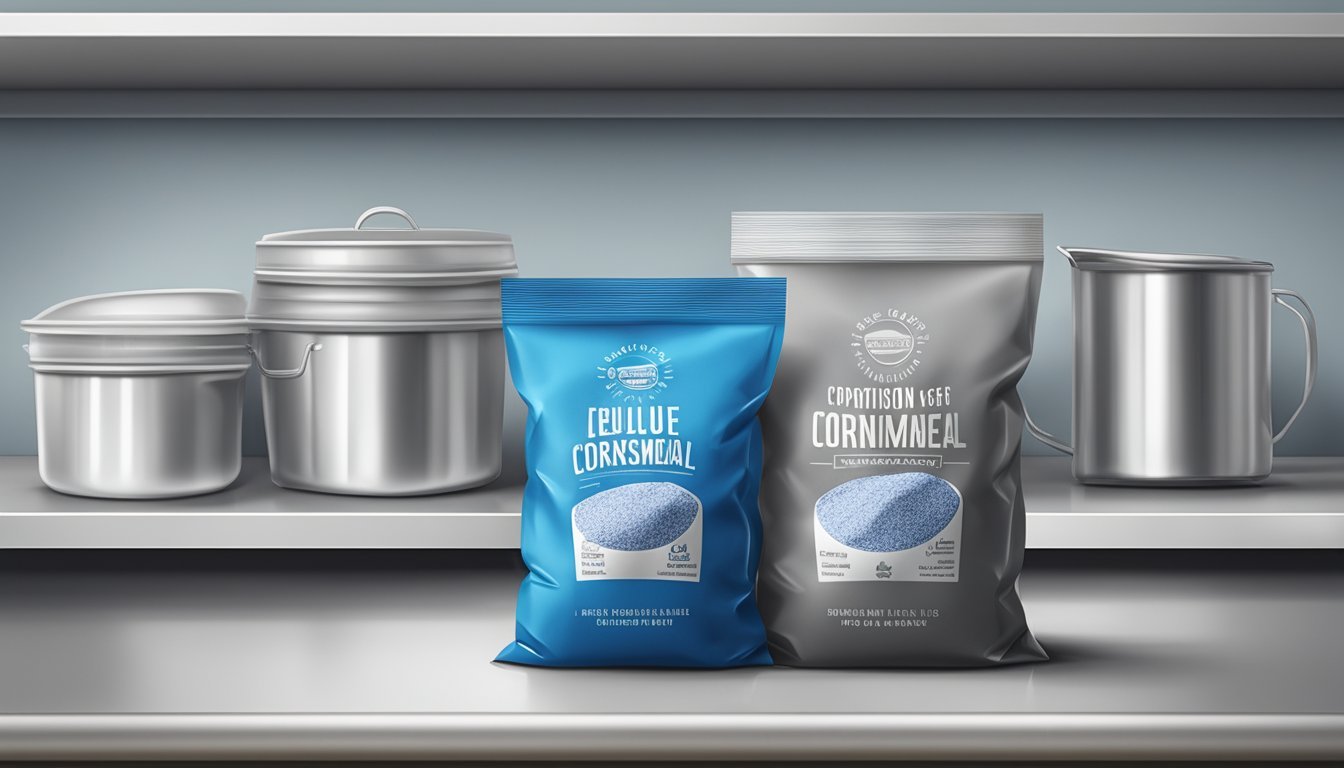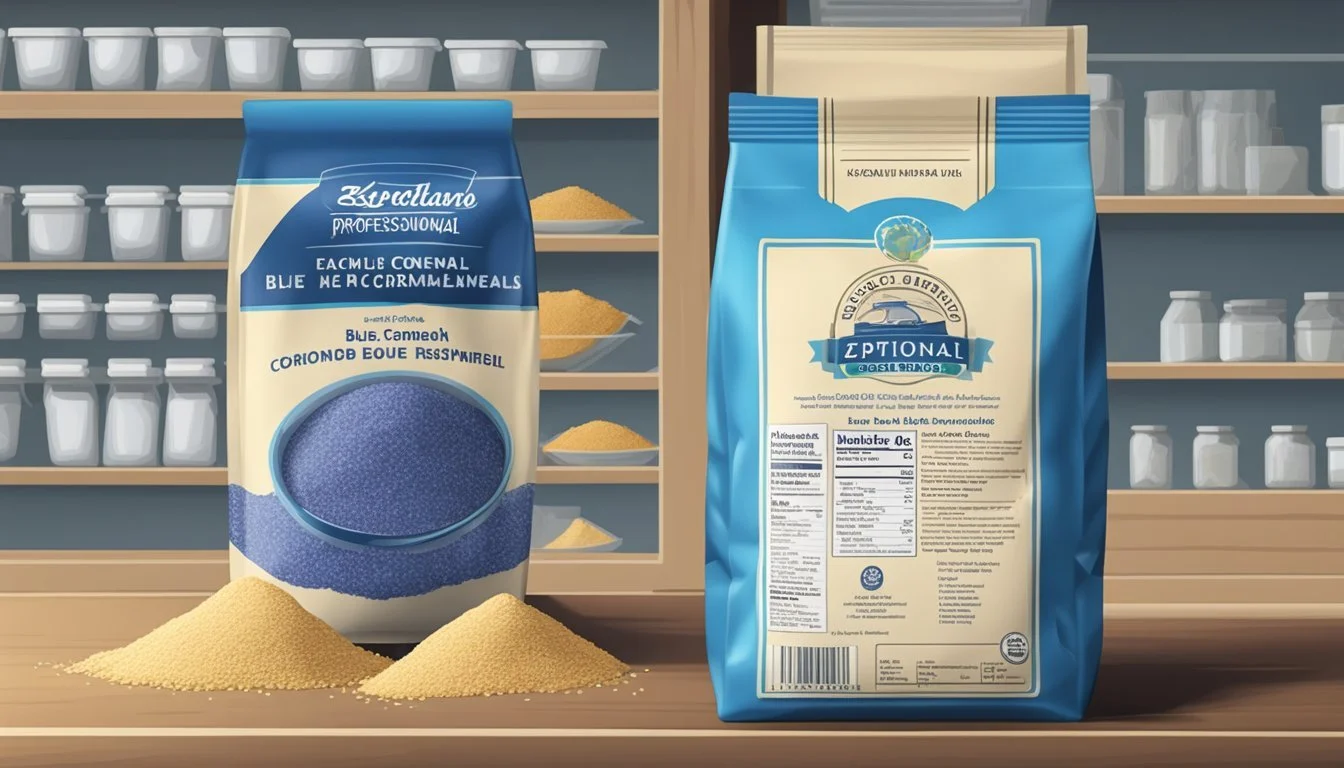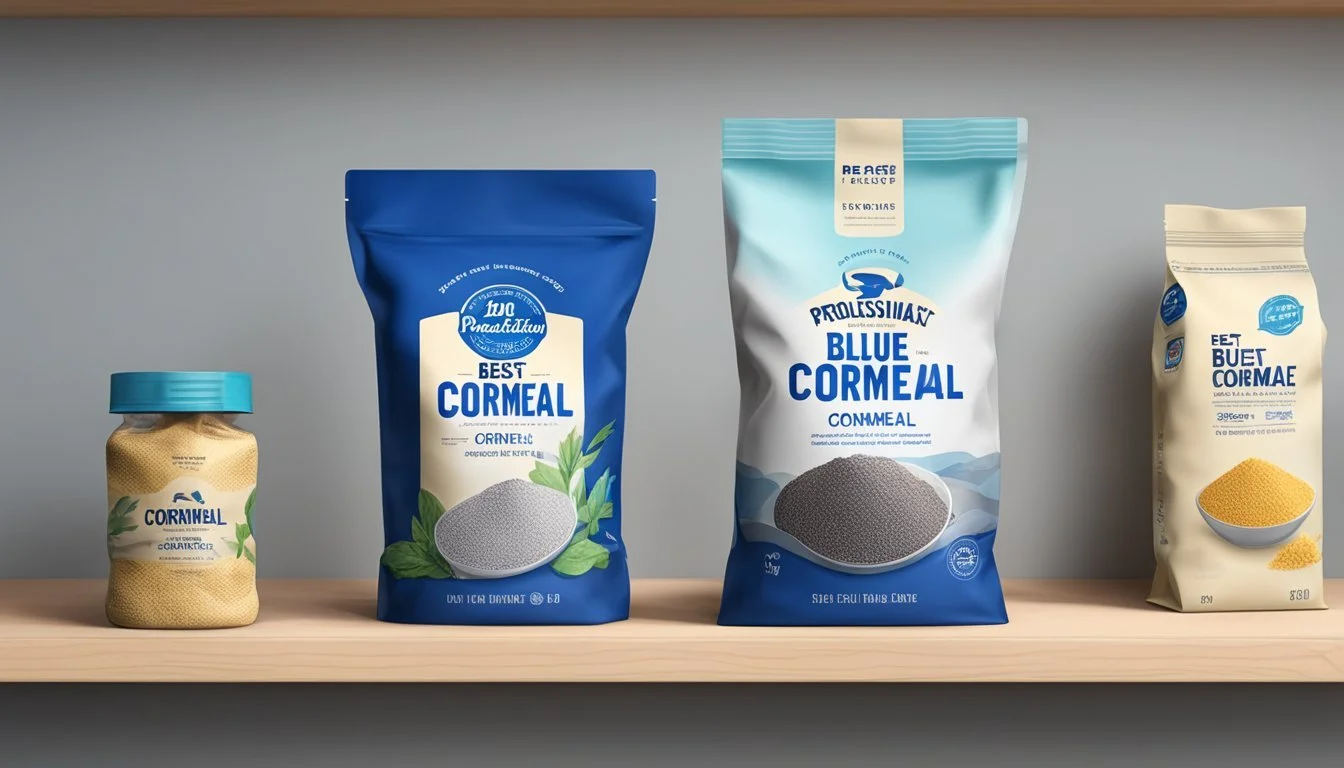How Long Does Blue Cornmeal Last?
Shelf Life and Storage Tips
Blue cornmeal is a vibrant variety of cornmeal derived from grinding blue corn kernels. It serves as a foundational ingredient in numerous culinary dishes, offers a nuttier and sweeter taste compared to its yellow counterpart, and adds an appealing color to recipes such as tortillas, cornbread, and pancakes. Shelf life is an important consideration for cooks and consumers, as the freshness of blue cornmeal can impact both its flavor and nutritional value.
Typically, blue cornmeal lasts well for approximately six months when stored under proper conditions. These conditions include keeping it in a cool, dark, and dry place, preferably in an air-tight container to protect it from moisture and pests, which can significantly shorten its usability. In the pantry, maintaining the integrity of the original packaging can also aid in preserving its shelf life.
For long-term storage, blue cornmeal can be frozen, extending its shelf life considerably. When kept at a constant 0° F in the freezer, it maintains its best quality over time. While freezing can prolong its shelf life indefinitely, it is most advisable to use it within a reasonable timeframe to enjoy its best quality in terms of texture and flavor.
Understanding Cornmeal
Cornmeal serves as a versatile cooking and baking staple derived from dried corn kernels. It is a common ingredient in a variety of culinary dishes due to its distinct texture and flavor.
Types of Cornmeal
Whole-Grain Cornmeal: This type contains the entire corn kernel: the germ, bran, and endosperm, making it a rich source of fiber and nutrients. Blue Cornmeal specifically is made from grinding blue corn and retains a nuttier flavor and higher protein content compared to yellow cornmeal (how long does yellow cornmeal last?).
Degerminated Cornmeal: In contrast, degerminated cornmeal has the germ and bran removed, which extends its shelf life but also removes some of its nutritional profile. Regular Cornmeal often refers to this type and is frequently used for a lighter texture in recipes.
Nutritional Profile
Cornmeal, particularly when whole-grain, provides a good source of fiber, which aids in digestion. It also contains important minerals such as iron, essential for blood health. Adding to its appeal, cornmeal is gluten-free, making it suitable for those with gluten-related disorders.
Vitamins: Whole-grain versions like blue cornmeal are also better sources of vitamins compared to degerminated cornmeal. They can offer a range of B vitamins, contributing to energy metabolism and overall well-being.
Shelf Life Factors
The shelf life of blue cornmeal is influenced by several environmental conditions. Understanding these can help extend its usability.
Impact of Temperature
Blue cornmeal's longevity is significantly affected by temperature. High temperatures can promote the growth of spoilage organisms and increase the rate of oxidation. To maintain quality, it should be stored in a cool place, ideally below room temperature.
Effect of Moisture
Moisture is a critical factor impacting shelf life. Excessive humidity can lead to mold growth and spoilage. Blue cornmeal must be kept in a dry place to prevent moisture absorption. Using an air-tight container helps to shield it from ambient humidity.
Exposure to Air
Exposure to air can lead to oxidative rancidity, affecting taste and quality. It's important to limit air exposure by sealing the packaging properly after each use. Oxygen absorbers can further extend shelf life when used in storage.
Presence of Light
Light, especially direct sunlight, can degrade the quality of blue cornmeal through photooxidation. It is advisable to store blue cornmeal in a dark location or in an opaque container to shield it from light exposure.
Optimal Storage Conditions
To ensure the longevity of blue cornmeal, proper storage conditions are paramount. They must include maintaining adequate temperature, humidity, and protection from external elements.
In the Pantry
Storing blue cornmeal in the pantry requires a cool, dark place with a consistent temperature range of 50 to 70 degrees Fahrenheit. It is recommended to transfer the cornmeal to an airtight container or a resealable plastic bag to safeguard against moisture and pests. Keeping it at room temperature in its original packaging is acceptable for short-term storage.
Refrigeration
When blue cornmeal is stored in the refrigerator, make sure it's placed in a sealed airtight container or a ziplock bag to prevent it from absorbing moisture and odors. This method can extend its freshness beyond pantry storage.
Freezing
For maximum shelf life extension, blue cornmeal can be stored in the freezer. It should be contained in a freezer bag or a plastic container to prevent freezer burn. Labeling with the date of storage can help track how long the blue cornmeal has been frozen. Using oxygen absorbers within the container can further prolong its freshness.
Maximizing Freshness and Quality
To preserve the freshness, quality, and flavor of blue cornmeal, proper storage is essential. Selecting the right container, keeping the cornmeal dry, and managing temperature are all critical factors that affect its taste and texture.
Container Selection
Choosing an airtight container is crucial for maintaining the integrity of blue cornmeal. An airtight seal prevents moisture and air from affecting the cornmeal, which can lead to spoilage. Glass or plastic containers with tight-fitting lids are recommended.
Keeping Cornmeal Dry
Store blue cornmeal in a dry place to protect its quality and extend its shelf life. Moisture is the enemy of freshness and can deteriorate the texture and flavor of the cornmeal. Ensure that the storage area is free from humidity and not prone to damp conditions.
Managing Temperature
To retain its peak quality, blue cornmeal should be stored in a cool environment. Extreme temperatures, both hot and cold, can alter its taste and texture. A pantry or cupboard, away from any heat sources like stoves or sunlight, is an ideal location.
Signs of Spoilage
In assessing the freshness of blue cornmeal, one must pay close attention to visual cues and olfactory indicators. These can reveal if the cornmeal is no longer suitable for consumption.
Visual Indicators
Blue cornmeal should maintain a consistent color profile and texture. Signs of spoilage include:
Discoloration: White, green, or black spots may signal mold growth.
Texture: If the normally fine, powdery substance becomes clumpy, lumpy, or grainy, this suggests moisture has infiltrated the product leading to potential spoilage.
Olfactory Cues
The scent of blue cornmeal is a reliable indicator of its condition:
Normal Odor: A mild, slightly sweet aroma is expected from fresh blue cornmeal.
Off Odor: A sour, musty, or rancid smell indicates that the cornmeal has gone bad and should not be used.
Food Safety and Spoilage Prevention
When considering the longevity of blue cornmeal, it is essential to understand expiration information and to employ effective handling methods to prevent spoilage and maintain food safety.
Understanding Expiration Labels
Expiration labels on blue cornmeal, or any food product, offer guidelines for optimal quality rather than strict safety cut-offs. Best by and best if used by dates indicate when the product is expected to be at its peak quality. A best by date does not necessarily signal that the food is unsafe to consume past that date, but it may not be at its best in terms of flavor or texture. It is beneficial for consumers to understand these terms and their implications on food safety and quality.
Proper Handling Techniques
Proper handling of blue cornmeal is critical for maintaining its quality and safety. The product should be stored in an airtight container after opening to protect it from moisture and other contaminants that can facilitate spoilage. A cool, dry place is ideal for pantry storage, away from direct light and strong odors which blue cornmeal can absorb. Refrigeration can extend the shelf life to approximately 3 months, and when stored in the freezer, blue cornmeal may last up to 6 months while still maintaining good quality. Freezing should be done with as little air as possible in the container to reduce the risk of freezer burn.
Practical Tips and Uses
When it comes to blue cornmeal, maintaining freshness is key for optimal taste and usability, while its versatility in recipes ranges from traditional dishes to innovative culinary creations.
Extending Shelf Life
To ensure blue cornmeal keeps its quality, storage is critical. One should store blue cornmeal in a cool, dry place, and keeping it in an airtight container is essential to prevent moisture and pests from spoiling it. For prolonged storage, placing blue cornmeal in the freezer is a viable option, as it will remain safe to use indefinitely, although for best quality, use within six months.
Creative Uses in Recipes
Blue cornmeal is not only a vibrant ingredient but also a versatile one. Its distinct color can bring visual interest to a variety of recipes. Here are some specific ways to incorporate blue cornmeal into cooking:
Tortillas: Replace traditional cornmeal with blue cornmeal for a unique twist on homemade tortillas.
Cornbread: Add a colorful change to classic cornbread, enhancing both its visual appeal and nutritional profile.
Polenta: Create an eye-catching and nutritious polenta dish as an enticing alternative to standard yellow corn versions.
Muffins and Bread: Utilize blue cornmeal in muffin or bread recipes for an extra pop of color and a subtle flavor difference.
Pancakes: Incorporate blue cornmeal into pancake batter for pancakes that are not just delicious but also visually appealing.
By following these storage tips and exploring various culinary uses, one can fully enjoy the benefits of blue cornmeal in both taste and presentation.
Addressing Common Concerns
When storing blue cornmeal, consumers often encounter issues related to freezer burn and pest control. Understanding how to manage these concerns is essential for maintaining the quality of blue cornmeal over time.
Freezer Burn and Quality
Freezer burn can significantly impact the quality of blue cornmeal, leading to a dry texture and altered taste. To prevent it, one should store blue cornmeal in airtight containers or freezer bags. Minimizing air exposure is critical. While freezer burn does not make the cornmeal unsafe to consume, it can compromise its best quality — often recognizable for around 6 months.
Dealing with Pests and Insects
Blue cornmeal can be susceptible to pantry pests such as weevils and other insects that thrive in dry goods. To discourage infestation, storage in airtight containers is recommended. It's crucial to keep the storage area cool, dry, and clean; regular checks can help detect any issues early. If pests are found in other pantry items, they can spread to unsealed cornmeal, causing it to spoil and possibly leading to rancidity.
Additional Considerations
When discussing the longevity of blue cornmeal, it's also important to consider its distinctions from other cornmeal varieties and the specific dietary attributes it possesses.
Blue Cornmeal Versus White and Yellow
Blue cornmeal, crafted from grinding blue corn kernels, is recognized for its unique nutty flavor and bolder coloration compared to its white and yellow counterparts. The distinct qualities of blue cornmeal may influence its shelf life differently. For example, stone-ground blue cornmeal, which retains more of the natural corn kernel, typically expires sooner due to the higher oil content which can go rancid. In contrast, more processed variants may last longer.
Special Dietary Notes
Blue cornmeal is naturally gluten-free, making it a suitable alternative for individuals with celiac disease or anyone adhering to a gluten-free diet. However, cross-contamination is a risk if the blue cornmeal is processed or packaged in a facility that also handles wheat or other gluten-containing grains. It's crucial to verify packaging labels to ensure that the blue cornmeal meets gluten-free standards.
Conclusion
Blue cornmeal, as with other varieties, possesses a finite shelf life. It retains its quality for approximately 2 to 3 months when stored at room temperature in a cool, dry area. For extended preservation, blue cornmeal can be stored in the freezer where it may last for 4 to 6 months.
Appropriate food storage is crucial to prolong the shelf life of blue cornmeal. One should store it in an airtight container or sealable plastic bag to guard against moisture and pests. The location should be dark and away from any sources of heat or direct sunlight.
Itemized storage recommendations:
Room Temperature: Cool, dry place in airtight container
Refrigerator: Not typically recommended
Freezer: In airtight container or sealed plastic bag
It's important to note that blue cornmeal can go bad, indicated by a sour smell, a change in color, or the presence of mold. Upon observing these signs, one should discard the product.
To summary, here are key points for maintaining the quality of blue cornmeal:
Store in a cool, dry environment.
Use an airtight container to protect from moisture and pests.
Observe best-by dates as general guidance.
For long-term storage, freezing is a viable option.
Inspect regularly for signs of spoilage and discard if necessary.
In conclusion, while the shelf life of blue cornmeal is inherently limited, proper storage techniques can optimize its longevity.

